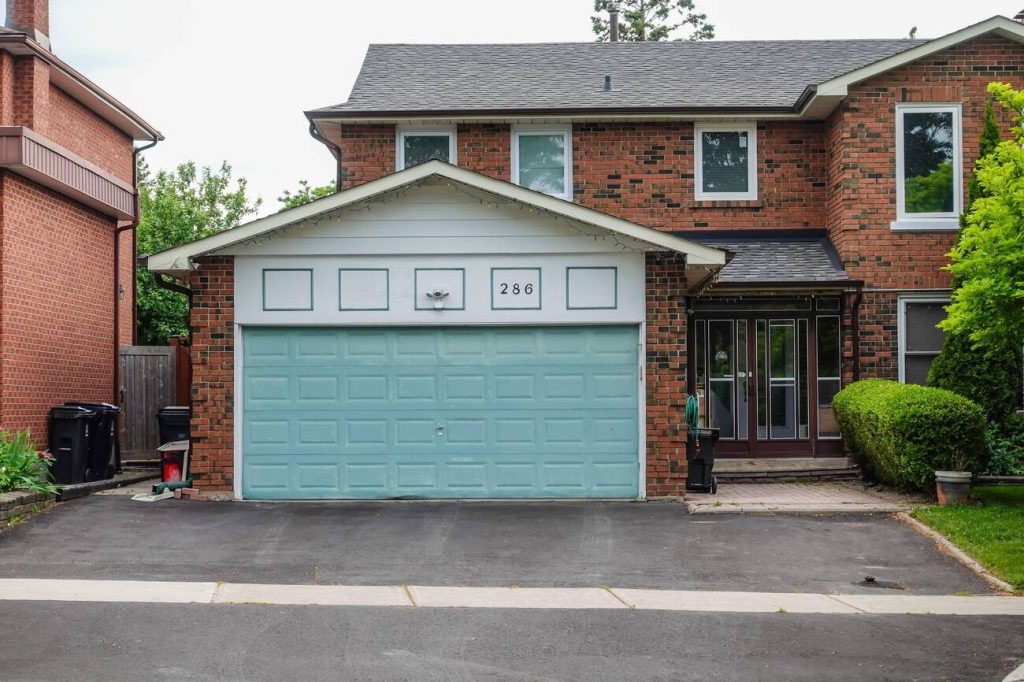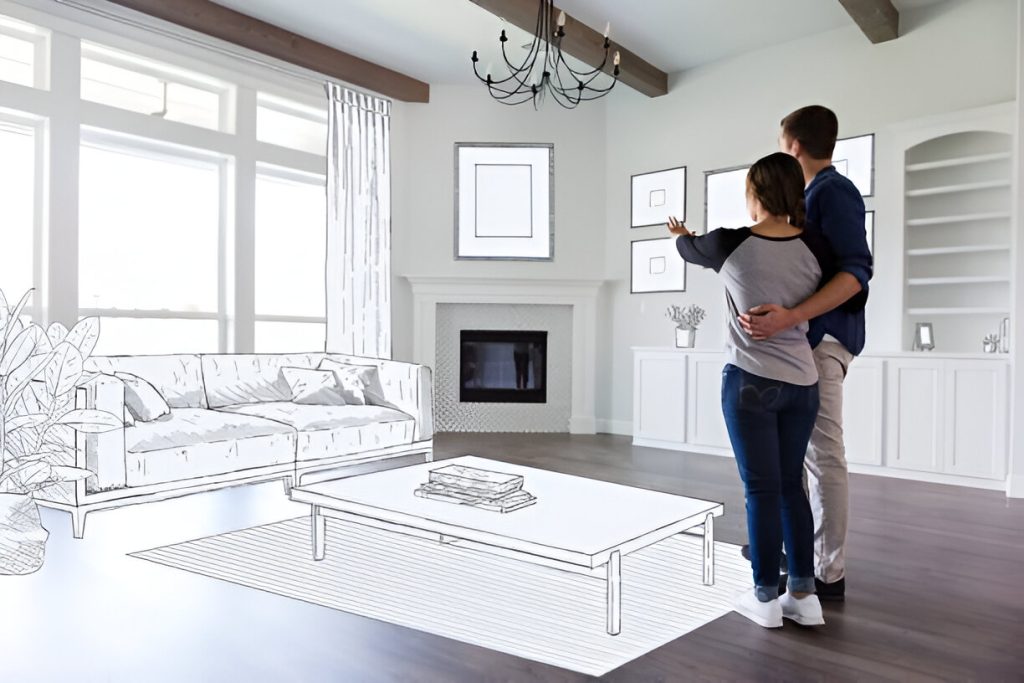Like a coat of sunshine on a cloudy day, choosing the right paint can make all the difference. But with so many options out there, it can be overwhelming to figure out what kind of paint is best for your garage door. Don’t worry, we’ve got you covered. In this article, we’ll explore the types of paint that work best for different garage door materials, the importance of proper paint selection, and the step-by-step process to achieve a professional finish. Let’s dive in and transform your garage door into a work of art!
Types of Paint for Different Garage Door Materials
If you have a vinyl garage door, it is recommended to use latex exterior paint as it adheres well to vinyl and can withstand outdoor conditions. Latex exterior paint provides excellent adhesion and durability, ensuring that the paint stays on the surface of the door for a long time. It is also weather-resistant, protecting the vinyl door from rain, sun, and other outdoor elements. Not only does latex exterior paint provide functionality, but it is also aesthetically pleasing. It gives the garage door a smooth and even finish, enhancing its overall appearance. With the right paint, you can achieve a long-lasting and visually appealing finish for your vinyl garage door.
Importance of Proper Paint Selection for Garage Doors
Choosing the right paint ensures a long-lasting and aesthetically pleasing finish for your garage door. The proper paint selection is crucial to avoid common paint problems on garage doors such as peeling, cracking, and fading. It is important to consider the material of your garage door when choosing the paint. Latex exterior paint is recommended for vinyl garage doors, while latex or acrylic paint is ideal for wood doors. For metal doors, acrylic or direct-to-metal exterior paint is the best choice. Additionally, selecting the right paint color is essential for enhancing the overall curb appeal of your home. When painting your garage door, it is also important to choose the right paint finish, such as satin or semi-gloss, for durability and easy maintenance. To achieve a professional-looking paint job, proper surface preparation, using the right tools and techniques, and applying multiple thin coats of paint are important. However, if you want to ensure a flawless and hassle-free paint job, hiring a professional painter for your garage door can offer numerous benefits. They have the expertise, experience, and proper equipment to achieve a high-quality finish and save you time and effort.
Tools and Materials Needed for Garage Door Painting
To properly prepare for painting your garage door, make sure you gather all the necessary tools and materials beforehand. Here are some tips to help you enjoy the painting process:
- Garage door painting techniques
- Use a roller for a smooth and even finish.
- Apply paint in sections, wiping away excess for a clean look.
- Proper paint adhesion
- Choose the right paint for your garage door material.
- Clean and prepare the surface before painting for better adhesion.
- Weather conditions for painting
- Paint on a dry day to avoid moisture issues.
- Avoid painting in extreme temperatures.
- Choosing the right paint color
- Consider the overall aesthetic of your home.
- Test paint samples on your garage door before committing.
- Tips for a smooth finish
- Apply thin coats of paint for better coverage.
- Allow each coat to dry completely before applying the next.
Surface Preparation for Garage Door Painting
Start by thoroughly cleaning the entire surface of your garage door using a wire brush and sanding pad to remove rust, old paint, dirt, and grime. Proper surface preparation is essential for a successful garage door painting project. Once the door is clean, you can proceed to paint. But before you do, consider a few important factors. First, think about the weather conditions. Choose a dry day to paint and avoid direct sunlight, as extreme temperatures can affect paint adhesion. Next, explore paint color options that suit your personal style and complement your home’s exterior. Finally, ensure you have the right paint for your garage door material. Use latex exterior paint for vinyl doors, latex or acrylic for wood doors, and acrylic or direct-to-metal paint for metal doors. By following these steps and taking the time to properly prepare your garage door, you’ll achieve a long-lasting and visually appealing finish.
Steps for Painting a Garage Door
Once the garage door surface is properly prepared, tape off handles, locks, and trim to ensure clean paint lines. To help you enjoy the process and achieve the best results, here are some preparation techniques, paint application tips, color selection options, weather considerations, and finishing touches to keep in mind:
- Preparation Techniques:
- Remove any rust, old paint, dirt, and grime using a wire brush and sanding pad.
- Clean the entire door with an all-purpose cleaner and rinse with water.
- Ensure the surface is clean and smooth before painting.
- Allow the garage door to dry completely before starting.
- Paint Application Tips:
- Begin by priming the inset panels and then use a roller for the rest of the door.
- Apply paint in sections, wiping away excess paint for a smooth finish.
- Consider applying a second coat for better coverage and durability.
- Follow proper painting techniques for a professional-looking result.
Remember to consider color selection options that complement your home’s exterior, take weather conditions into account for optimal paint adhesion and drying, and finish off with any necessary touch-ups or sealants for added protection. Enjoy transforming your garage door with a fresh coat of paint!
Additional Information and Options
If you’re unsure about which color to choose for your garage door, consider selecting a shade that complements your home’s exterior. This will create a cohesive and visually appealing look for your property. In addition to color selection, there are other factors to consider when painting your garage door. Here are some common paint problems and how to fix them, tips for achieving a smooth and professional paint finish, and how to properly clean and maintain a painted garage door. Lastly, let’s discuss the pros and cons of DIY garage door painting versus hiring a professional.
| Common Paint Problems and How to Fix Them | Tips for Achieving a Smooth and Professional Paint Finish |
|---|---|
| Blistering or Bubbling | Use a scraper to remove the blistered paint, sand the surface, and apply a primer before repainting. |
| Cracking or Peeling | Scrape off the loose paint, sand the area, and apply a primer before painting. Use quality paint for better adhesion. |
| Fading or Chalking | Clean the surface thoroughly and apply a UV-resistant paint to prevent fading. Use a paint with a high pigment concentration. |
| Uneven or Streaky Finish | Use a roller or brush with smooth, even strokes. Apply thin coats and allow each coat to dry before applying the next. |
Choosing the right color for your garage door is important in achieving an aesthetically pleasing look for your home. Consider the overall color scheme of your exterior and choose a color that complements it. You can also take inspiration from neighboring houses or consult a professional for advice.
To properly clean and maintain a painted garage door, regularly wash it with a mild detergent and water. Avoid using harsh chemicals or abrasive materials that can damage the paint. Inspect the door for any signs of peeling or cracking and touch up the paint as needed.
When it comes to painting your garage door, you have the option to do it yourself or hire a professional. DIY painting allows you to save money, but it requires time, effort, and the right tools. Hiring a professional ensures a high-quality finish, but it comes with a cost. Consider your budget, skill level, and time availability before making a decision.
Preparing the Garage Door for Painting
Before painting, it is crucial to assess the condition of the garage door and address any damages or cracks. To help you enjoy this process, here are some tips:
- Garage door cleaning:
- Use a pressure washer or hose with diluted detergent to clean the door.
- Remove rust by lightly sanding the affected areas.
- Scrape off flaking paint and lightly sand painted doors.
- Choosing the right primer:
- Use a metal primer paint that is long-lasting and resistant to rust and corrosion.
- Oil-based or urethane primers are recommended for a smooth finish.
- Apply one coat of primer if necessary.
- Proper paint application:
- Use oil-based exterior paint or premium acrylic latex for metal doors.
- Apply thin coats of paint, allowing each coat to dry completely.
- Start painting from the top and work your way down.
- Weather considerations:
- Choose a dry day to paint, avoiding direct sunlight.
- Ensure the paint finish is dry before applying a clear sealant.
- Garage door maintenance:
- Consider applying a clear sealant for added protection.
- Contact professionals for assistance with garage door cleaning and maintenance.
Priming the Garage Door
To achieve a smooth finish, it’s recommended to apply one coat of primer on the garage door surface before painting. Priming the garage door is an essential step in the garage door preparation process. Not only does it provide better adhesion for the paint, but it also enhances the durability of the paint job. The primer acts as a base layer that helps the paint adhere to the surface and prevents it from peeling or cracking. Additionally, the primer helps to seal the surface, making it more resistant to moisture and other environmental factors. When choosing a primer, consider the type of material your garage door is made of and select a primer that is suitable for that material. This will ensure that the primer effectively adheres to the surface and provides optimal protection.





